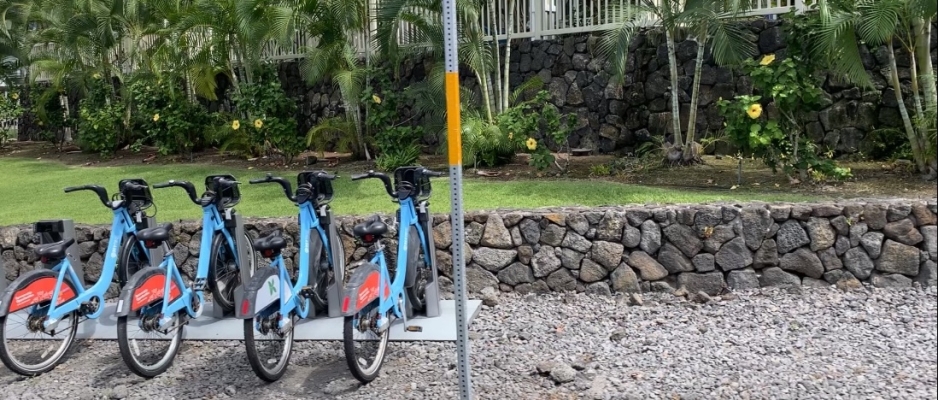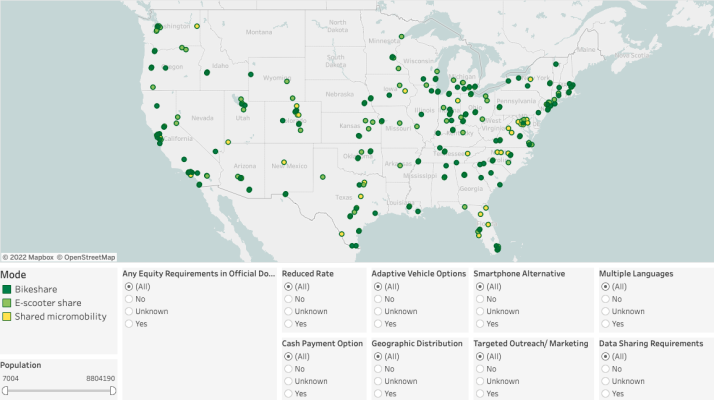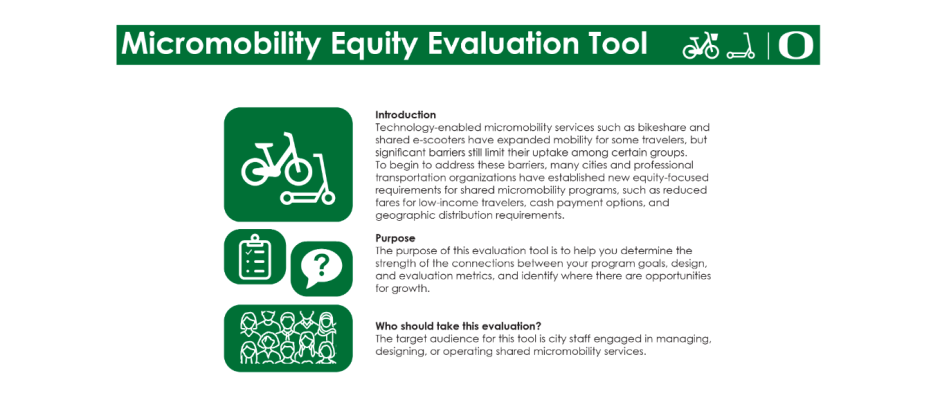Shared Micromobility Equity

Shared micromobility services such as bikeshare and shared e-scooters are increasing across the U.S., with programs in nearly every state. This has expanded transportation options for some people, but there are still significant barriers for many communities . Some cities and transportation agencies are using new equity-based requirements, but they range widely by city and program These requirements generally fall within seven categories: reduced fares, multilingual services, cash payment compatibility, non-smartphone access, adaptive vehicles for users with disabilities, mandated geographic service areas, and targeted marketing and outreach. Program requirements are an important step towards operationalizing equity in shared micromobility, but our understanding of their impact is limited. Our research looked at four questions:
- What equity requirements do shared micromobility programs include?
- What strategies are employed by cities/agencies seeking to operationalize equity in shared micromobility programs?
- To what extent are programs monitored and evaluated to determine if program requirements translate to more equitable outcomes in practice?
- 4) how do current frameworks approach equity in shared micromobility?
To answer these questions, we collected information from 239 shared micromobility programs across the U.S., conducted five case studies, and reviewed existing literature and mobility equity frameworks (read the full report). We also created an online dashboard and interactive tool to aid practitioners in operationalizing equity in shared micromobility services.
Key Findings
- Equity requirements are common, but far from universal. Equity requirements were documented in 62% of the 239 evaluated programs.
- The most prevalent equity requirements target implementation. Specifically, many cities/agencies include requirements related to cost and technology access, including requiring smartphone-alternative access (36%), cash payment options (33%), and reduced fares (32%).
- A key challenge to evaluating outcomes is connecting data to evaluation. Most programs (83%) require data sharing. Far fewer, however, publish public-facing evaluation reports (27%) or incentivize or enforce meeting equity requirements (15%).
- Five promising approaches to advancing equity in shared micromobility include: 1) link operational incentives to desired equity outcomes; 2) dedicate staff time and resources to manage shared micromobility programs; 3) ensure that there is a clear arc connecting specific goals with program requirements; 4) match each program requirement with targeted data collection to enable assessment of how successfully each requirement is meeting its goals; and 5) conduct transparent evaluation to measure progress and identify future paths of improvement or iteration.
Learn more about this research and watch the webinar with the research team.
US Micromobility Equity Requirements Dashboard

As part of our work on this project, we developed two practitioner-oriented tools. The first is the US Micromobility Equity Requirements Dashboard which reflects data from more than 230 shared micromobility programs across the U.S. The dashboard includes detailed information about seven different equity requirements that cities/agencies may impose. Users can select points on an interactive map to learn more about each program’s equity requirements, and can download the full dataset including specific policy language and source.
Shared Micromobility Equity Evaluation Tool

The second tool we created is the Shared Micromobility Equity Evaluation Tool. This interactive online tool is designed for city or agency staff to evaluate shared micromobility programs currently in operation. The tool poses a series of questions and qualitative reflections across three dimensions of equity: Process, Implementation, and Evaluation. After completing the evaluation, respondents receive a customized score (ranging from Beginner to Advanced) for each equity dimension. The scores provide a foundation for agencies to understand and reflect on the strengths of their program as well as identify where opportunities for growth exist. Each score is accompanied by a list of promising equity practices that other cities and agencies have used.
The Research Team
This research was led by Dr. Anne Brown, Assistant Professor in the School of Planning, Public Policy, and Management at the University of Oregon, and Amanda Howell, Researcher with the Urbanism Next Center at the University of Oregon. Research assistance was provided by Zoe Green and in consultation with expertise in shared mobility equity from: Hana Creger (The Greenlining Institute), Duncan Hwang (APANO), Río Oxas (RAHOK), and Clarrissa Cabansagan.
